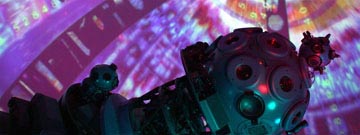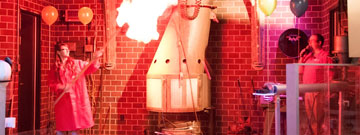roboworld®
What is a robot?
Ask a bunch of robotics experts, and you will get a bunch of answers. Instead let's ask, what is robotics technology? Robotics technology consists of machines that can:
- Sense - Sensors, or feedback devices, allow information about the machine's surroundings to be recorded as electronic values.
- Think - This electronic data is then used in complex circuits programmed to produce signals at the other (output) end of the circuit.
- Act - Acting is the most obvious part of robotics technology. The electronic signals that were produced as a result of sensing and thinking then control whatever the robot is designed to do, like lift a sick person, make a facial expression, or control the motors that allow it to navigate around an obstacle.
One "expert" definition of a robot is given as "a machine with at least three axes of motion (e.g. wrist, elbow, and shoulder), an attached tool, and the ability to be reprogrammed for various tasks." Not a bad definition, if you like industrial robots.
If the notion of sensing the environment IS required for a robot, then Hoops, our basketball-shooting industrial arm, isn't a robot at all. Without any type of sensors, Hoops shoots blindly, depending entirely on the programmer for getting the shot right in the first place, then repeats the shot precisely time and again.
Some might even argue that modern cars are robots, with their extensive array of sensors and programmed circuitry designed to respond to conditions on the road and in the engine. However, there aren't any "axes of motion."
People's Choice
Many people will think of R2-D2 or Gort as robots. These are models of humanoid robots, machines that resemble us in appearance or by how they behave. Of course, Gort was just a big guy in a VERY big costume, and R2-D2 was completely controlled by people behind the scenes of the movie. Other humanoid robots, like Honda's ASIMO, are so advanced that they even act like us - with no help from behind the curtains.
To many people, robots are robots especially if they are:
- Humanoid
- Agile
- Sociable
- Smart
Some robots do all these things quite well - they sense, think, and act like us, look like us, and get around just fine - while others are less clever or hardly appear to be robots at all. Given the astonishing pace of technological innovation, it's quite possible that the definition of a robot will become broader and broader. But that is half the fun!













